Aditya Krishnan
Identity-Focused Inference and Extraction Attacks on Diffusion Models
Oct 14, 2024Abstract:The increasing reliance on diffusion models for generating synthetic images has amplified concerns about the unauthorized use of personal data, particularly facial images, in model training. In this paper, we introduce a novel identity inference framework to hold model owners accountable for including individuals' identities in their training data. Our approach moves beyond traditional membership inference attacks by focusing on identity-level inference, providing a new perspective on data privacy violations. Through comprehensive evaluations on two facial image datasets, Labeled Faces in the Wild (LFW) and CelebA, our experiments demonstrate that the proposed membership inference attack surpasses baseline methods, achieving an attack success rate of up to 89% and an AUC-ROC of 0.91, while the identity inference attack attains 92% on LDM models trained on LFW, and the data extraction attack achieves 91.6% accuracy on DDPMs, validating the effectiveness of our approach across diffusion models.
PTQ4ADM: Post-Training Quantization for Efficient Text Conditional Audio Diffusion Models
Sep 20, 2024Abstract:Denoising diffusion models have emerged as state-of-the-art in generative tasks across image, audio, and video domains, producing high-quality, diverse, and contextually relevant data. However, their broader adoption is limited by high computational costs and large memory footprints. Post-training quantization (PTQ) offers a promising approach to mitigate these challenges by reducing model complexity through low-bandwidth parameters. Yet, direct application of PTQ to diffusion models can degrade synthesis quality due to accumulated quantization noise across multiple denoising steps, particularly in conditional tasks like text-to-audio synthesis. This work introduces PTQ4ADM, a novel framework for quantizing audio diffusion models(ADMs). Our key contributions include (1) a coverage-driven prompt augmentation method and (2) an activation-aware calibration set generation algorithm for text-conditional ADMs. These techniques ensure comprehensive coverage of audio aspects and modalities while preserving synthesis fidelity. We validate our approach on TANGO, Make-An-Audio, and AudioLDM models for text-conditional audio generation. Extensive experiments demonstrate PTQ4ADM's capability to reduce the model size by up to 70\% while achieving synthesis quality metrics comparable to full-precision models($<$5\% increase in FD scores). We show that specific layers in the backbone network can be quantized to 4-bit weights and 8-bit activations without significant quality loss. This work paves the way for more efficient deployment of ADMs in resource-constrained environments.
Augmented Efficiency: Reducing Memory Footprint and Accelerating Inference for 3D Semantic Segmentation through Hybrid Vision
Jul 23, 2024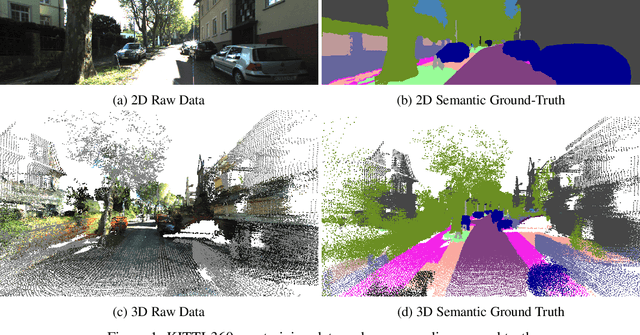
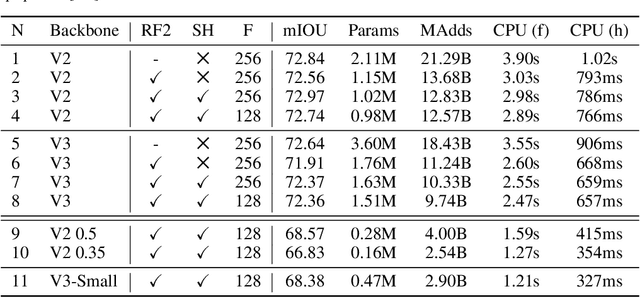
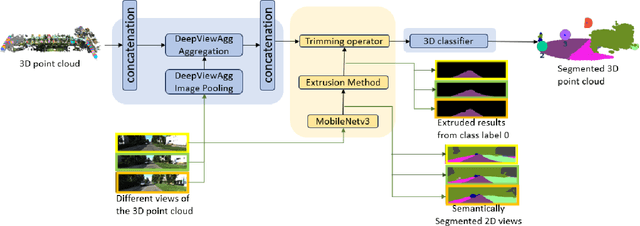

Abstract:Semantic segmentation has emerged as a pivotal area of study in computer vision, offering profound implications for scene understanding and elevating human-machine interactions across various domains. While 2D semantic segmentation has witnessed significant strides in the form of lightweight, high-precision models, transitioning to 3D semantic segmentation poses distinct challenges. Our research focuses on achieving efficiency and lightweight design for 3D semantic segmentation models, similar to those achieved for 2D models. Such a design impacts applications of 3D semantic segmentation where memory and latency are of concern. This paper introduces a novel approach to 3D semantic segmentation, distinguished by incorporating a hybrid blend of 2D and 3D computer vision techniques, enabling a streamlined, efficient process. We conduct 2D semantic segmentation on RGB images linked to 3D point clouds and extend the results to 3D using an extrusion technique for specific class labels, reducing the point cloud subspace. We perform rigorous evaluations with the DeepViewAgg model on the complete point cloud as our baseline by measuring the Intersection over Union (IoU) accuracy, inference time latency, and memory consumption. This model serves as the current state-of-the-art 3D semantic segmentation model on the KITTI-360 dataset. We can achieve heightened accuracy outcomes, surpassing the baseline for 6 out of the 15 classes while maintaining a marginal 1% deviation below the baseline for the remaining class labels. Our segmentation approach demonstrates a 1.347x speedup and about a 43% reduced memory usage compared to the baseline.
FedDM: Enhancing Communication Efficiency and Handling Data Heterogeneity in Federated Diffusion Models
Jul 20, 2024
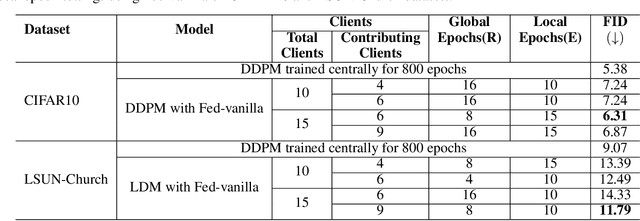
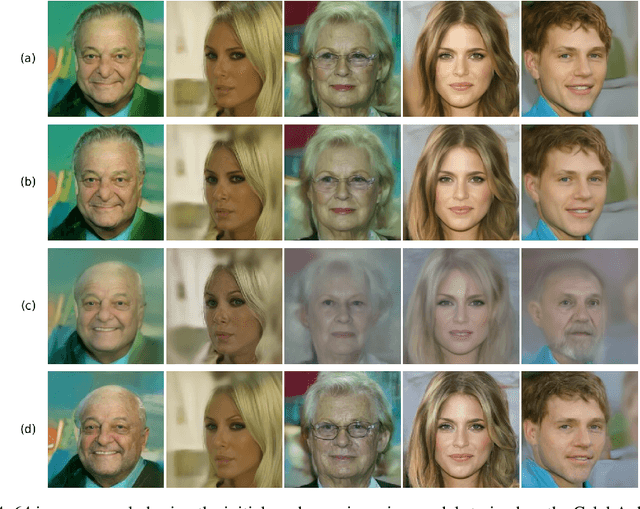

Abstract:We introduce FedDM, a novel training framework designed for the federated training of diffusion models. Our theoretical analysis establishes the convergence of diffusion models when trained in a federated setting, presenting the specific conditions under which this convergence is guaranteed. We propose a suite of training algorithms that leverage the U-Net architecture as the backbone for our diffusion models. These include a basic Federated Averaging variant, FedDM-vanilla, FedDM-prox to handle data heterogeneity among clients, and FedDM-quant, which incorporates a quantization module to reduce the model update size, thereby enhancing communication efficiency across the federated network. We evaluate our algorithms on FashionMNIST (28x28 resolution), CIFAR-10 (32x32 resolution), and CelebA (64x64 resolution) for DDPMs, as well as LSUN Church Outdoors (256x256 resolution) for LDMs, focusing exclusively on the imaging modality. Our evaluation results demonstrate that FedDM algorithms maintain high generation quality across image resolutions. At the same time, the use of quantized updates and proximal terms in the local training objective significantly enhances communication efficiency (up to 4x) and model convergence, particularly in non-IID data settings, at the cost of increased FID scores (up to 1.75x).
Optimistic Query Routing in Clustering-based Approximate Maximum Inner Product Search
May 20, 2024Abstract:Clustering-based nearest neighbor search is a simple yet effective method in which data points are partitioned into geometric shards to form an index, and only a few shards are searched during query processing to find an approximate set of top-$k$ vectors. Even though the search efficacy is heavily influenced by the algorithm that identifies the set of shards to probe, it has received little attention in the literature. This work attempts to bridge that gap by studying the problem of routing in clustering-based maximum inner product search (MIPS). We begin by unpacking existing routing protocols and notice the surprising contribution of optimism. We then take a page from the sequential decision making literature and formalize that insight following the principle of ``optimism in the face of uncertainty.'' In particular, we present a new framework that incorporates the moments of the distribution of inner products within each shard to optimistically estimate the maximum inner product. We then present a simple instance of our algorithm that uses only the first two moments to reach the same accuracy as state-of-the-art routers such as \scann by probing up to $50%$ fewer points on a suite of benchmark MIPS datasets. Our algorithm is also space-efficient: we design a sketch of the second moment whose size is independent of the number of points and in practice requires storing only $O(1)$ additional vectors per shard.
Lifelong Learning with Sketched Structural Regularization
Apr 17, 2021



Abstract:Preventing catastrophic forgetting while continually learning new tasks is an essential problem in lifelong learning. Structural regularization (SR) refers to a family of algorithms that mitigate catastrophic forgetting by penalizing the network for changing its "critical parameters" from previous tasks while learning a new one. The penalty is often induced via a quadratic regularizer defined by an \emph{importance matrix}, e.g., the (empirical) Fisher information matrix in the Elastic Weight Consolidation framework. In practice and due to computational constraints, most SR methods crudely approximate the importance matrix by its diagonal. In this paper, we propose \emph{Sketched Structural Regularization} (Sketched SR) as an alternative approach to compress the importance matrices used for regularizing in SR methods. Specifically, we apply \emph{linear sketching methods} to better approximate the importance matrices in SR algorithms. We show that sketched SR: (i) is computationally efficient and straightforward to implement, (ii) provides an approximation error that is justified in theory, and (iii) is method oblivious by construction and can be adapted to any method that belongs to the structural regularization class. We show that our proposed approach consistently improves various SR algorithms' performance on both synthetic experiments and benchmark continual learning tasks, including permuted-MNIST and CIFAR-100.
 Add to Chrome
Add to Chrome Add to Firefox
Add to Firefox Add to Edge
Add to Edge